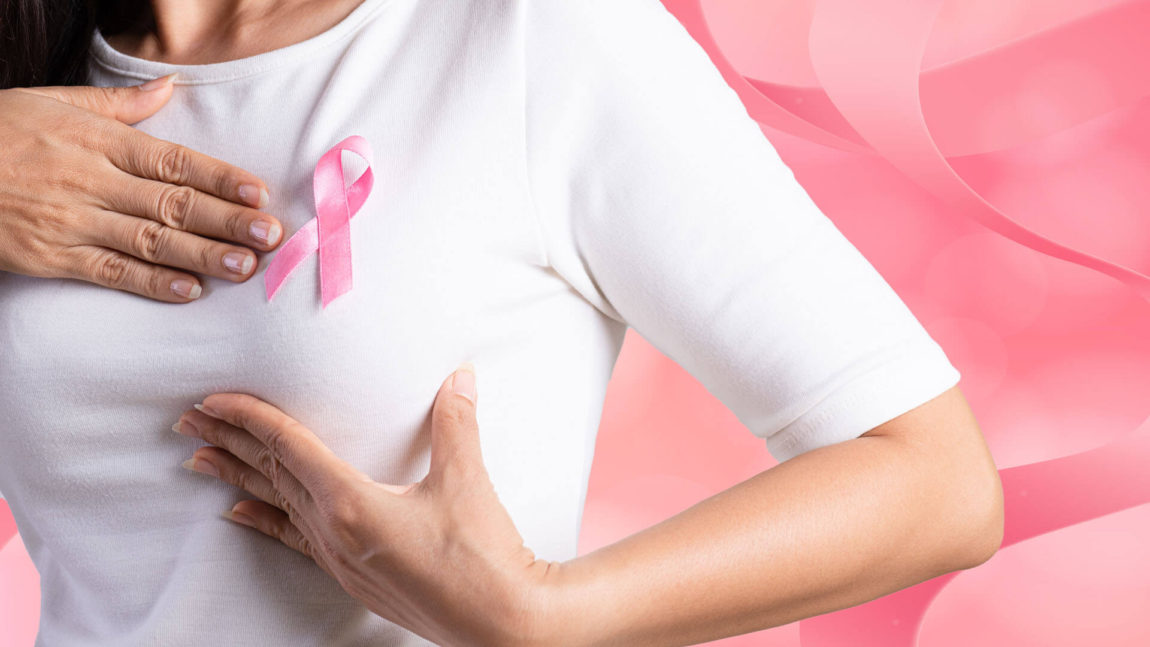Breast cancer’s death toll is a frightening number as an estimated 281,550 new cases of invasive breast cancer are expected to be diagnosed in women in the U.S. in 2021, from which 43,600 are expected to be fatal. On the other hand, 2,650 new cases of invasive breast cancer are expected to be diagnosed in men.1
About 1 in every 8 U.S. women will develop invasive breast cancer over the course of her lifetime. A risk that doubles if she has a first-degree relative previously diagnosed with breast cancer. But a risk that’s not definitive as less than 15% of diagnosed women have a family member diagnosed with it (in other words, 85% of cases have no family history of breast cancer). A treacherous disease indeed.1
As of January 2021, there are more than 3.8 million women that have suffered from breast cancer.1 Nonetheless, even though these are all scary statistics, there’s plenty we can do to fight and win the battle in advance.
The overall death rate from breast cancer has decreased by approximately 1% per year, from 2013 to 2018. This is because of the result of great progress in treatments and, more importantly, earlier detections through screening: our most powerful protection tool against breast cancer.
Although there are no 100% preventive proven methods to avoid the disease, there are healthy habits and practices that can be taken into consideration when lowering the risks factors:
- Lifestyle choices to lower cancer risk: Regular physical activity (30-60min per day of moderate to high intensity physical activity), maintaining a healthy weight, limit alcohol consumption, avoid post-menopausal hormone therapy to easy menopause symptoms, breastfeeding.
- Surgery to lower cancer risk: Women with BRCA1/BRCA2 genetic mutations (which greatly increases the risk of breast cancer) may consider preventive breasts removal (reduces risk to 90-95%).
- Drugs to lower cancer risk: Tamoxifen (blocks the effects of estrogen on tumor growth), Raloxifene, Aromatase inhibitors (reduces the amount of estrogen).2
Of course, screenings are the most recommended prevention practices as it:
- Lowers the number of people who develop the disease.
- Lowers the number of people who die from the disease.
- Identify people with a higher risk of developing a specific type of cancer who may need screening more often due to genetic mutations or diseases.2
Mammography is the best resource doctors have to screen healthy women for breast cancer. Ultrasound and magnetic resonance imaging (MRI) are also common screening methods in many women with average risk. Although the latter two have higher false-positive rates.2 These methods depend on the risk of the patient and the size of the mass or lump findings in breast’s physical examinations.
For screening, there are a few recommendations some women can follow:
- The U.S. Preventive Services Task Force (USPSTF) recommends mammography every 2 years for women ages 50 to 74. It also recommends considering mammography in women ages 40 to 49 after evaluating risks and benefits with a doctor.
- American Cancer Society (ACS) recommends women ages 40 to 44 to start yearly mammography.2
But more importantly, it is highly recommended that “all women talk with their doctors about breast screening and decide on an appropriate screening schedule.”2
All of these methods, recommendations and statistics just remind us how fragile is the human life and health overall, despite all of the medical treatments advancements.
As parents, we are expected to nurture our kids’ life with lessons and knowledge. As siblings, we are expected to look out for each other. As wives and husbands, we are expected to love and protect our partners. But cancers’ expectations eliminate all of that in a heartbeat. It puts life on hold despite the many responsibilities we might have with our loved ones and ourselves.
We often make plans. Plans that include life savings, jobs, children, exotic vacations and dauntless adventures. But truth is, all of that can be easily discarded and drastically changed with one single medical diagnose.
As human beings, we are expected to grow, learn and experience. What happens when cancer comes in the way of all of that? Life changes so quickly and things happen so fast that many times you lose sight of the person in the mirror, unrecognizable for some.
Cancer is like the silent enemy; anyone can develop it. The vulnerability of human beings and their sensibility to death is very high when we think about it. It is our duty to take care of ourselves and take care of any loved one that falls under the heartless chains of this disease.
That’s why prevention is so important. And having the strength and courage to fight whatever obstacle comes at you, even more. An easy thing to say, but a powerful reminder that we can achieve and overcome so much more when we put our minds and hearts into it.
Spread the word about breast cancer awareness, make donations where you can to women in need who can’t afford mammograms, rally in support of the cause, volunteer to help in fundraising activities, share your story and wear your pink ribbon.
It all goes a long way for many patients, friends and family members out there fighting the battles. We must all show our support and make their lives’ bright again, living one day at a time and helping them in resuming their own paths and truths despite this harsh “stop sign” that inadvertently comes knocking on your door when you least expect it.
Every little ounce of help and support counts. Together, we can all beat the disease and help each other to break on through.
1 Breastcancer.org (2021, February 4). U.S. Breast Cancer Statistics. Retrieved from: https://www.breastcancer.org/symptoms/understand_bc/statistics
2 Cancer.Net (2020, July). Breast Cancer: Risk Factors and Prevention. Retrieved from: https://www.cancer.net/cancer-types/breast-cancer/risk-factors-and-prevention
3 National Breast Cancer Foundation, Inc. (2021). Breast Cancer Awareness Month. Retrieved from: https://www.nationalbreastcancer.org/breast-cancer-awareness-month




